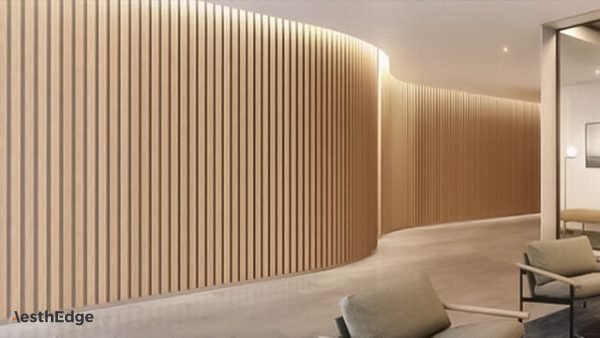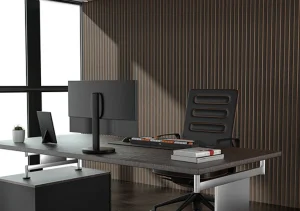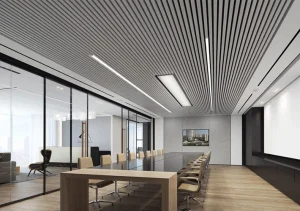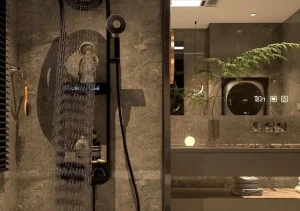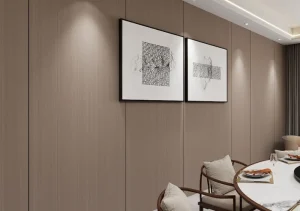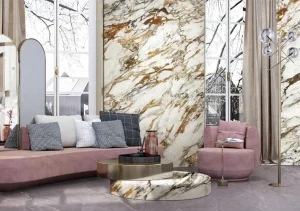Table of Contents
ToggleWhat Are UV Marble Sheets?
UV marble sheets are a type of decorative panel made from a composite of PVC (polyvinyl chloride) and other synthetic materials, which are then coated with a UV-cured resin. The UV (ultraviolet) curing process involves exposing the material to UV light, which chemically hardens the surface and improves its durability. This resin coating gives the sheets a glossy, polished finish that mimics the appearance of natural marble.
The popularity of UV marble sheets has grown significantly due to their ability to deliver both aesthetic and functional benefits at a fraction of the cost and weight of real marble.

Advantages of UV Marble Sheets
1. Enhanced Durability Through UV Curing
UV curing is a process that provides the surface of UV marble sheets with superior hardness. This results in a highly durable material that resists everyday wear and tear, especially in high-traffic areas. The UV coating also offers resistance to abrasion, which is particularly important in commercial environments or spaces where the surfaces will be exposed to heavy use.
Key Details:
- Scratch Resistance: The UV coating acts as a protective shield against scratches from objects like furniture, tools, or heavy items.
- Impact Resistance: While UV marble sheets are not indestructible, they are more resistant to impact damage compared to traditional materials like wood or ceramic tiles.
- Longevity: The UV curing process ensures that the surface does not degrade quickly, providing a long-lasting material that retains its visual appeal even in demanding conditions.
2. Superior Aesthetic Appeal with Natural Look
One of the biggest draws of UV marble sheets is their ability to mimic the luxurious look of real marble. The polished surface and glossy finish resemble high-end marble, making it a popular choice for residential and commercial interior designers looking to create an upscale look without the hefty price tag.
Key Details:
- Versatility in Design: UV marble sheets come in a variety of colors, patterns, and finishes, ranging from classic white and grey marble designs to more exotic patterns that mimic rare stone types.
- Reflective Finish: The smooth, reflective finish of UV marble sheets makes them an ideal option for spaces that require a polished, luxurious look. The glossy surface also reflects light, making rooms appear brighter and more spacious.
3. Affordability Without Compromising Quality
While real marble can be prohibitively expensive, especially when considering the cost of quarrying, transporting, and installing the material, UV marble sheets offer a cost-effective alternative.
Key Details:
- Lower Material Cost: The production of UV marble sheets uses synthetic materials like PVC, which are more affordable than natural stone.
- Installation Savings: The lightweight nature of UV marble sheets makes them easier and cheaper to transport and install compared to heavy natural marble slabs, which require specialized handling and skilled labor for installation.
4. Lightweight for Easy Handling and Installation
Natural marble is known for its weight and requires specialized equipment for transport and installation. In contrast, UV marble sheets are lightweight, which makes them easier to handle and install, even in areas with limited access or structural weight restrictions.
Key Details:
- Reduced Transport Costs: The reduced weight of UV marble sheets lowers shipping costs, especially for large-scale projects or international shipments.
- Speed of Installation: Since they are lighter, UV marble sheets can be installed more quickly than marble tiles or slabs, reducing labor time and installation costs.

5. Moisture and Stain Resistance
UV marble sheets are inherently resistant to moisture and stains due to the waterproof properties of PVC and the non-porous nature of the UV resin. This makes UV marble sheets a perfect choice for areas exposed to high moisture, such as bathrooms, kitchens, and laundry rooms.
Key Details:
- Waterproof Surface: UV marble sheets do not absorb water, reducing the risk of mold or mildew growth, which is a common problem with porous materials like natural stone or wood.
- Stain Resistance: Spills from food, beverages, oils, or cleaning chemicals can be wiped away without leaving permanent stains, making UV marble sheets a low-maintenance option for high-use spaces.
6. Ease of Maintenance
UV marble sheets are known for their easy maintenance. The non-porous surface does not require the regular sealing or polishing that natural marble requires. In addition, the material can be cleaned using standard household cleaners, making it a more convenient option for busy households or commercial spaces.
Key Details:
- Simple Cleaning: UV marble sheets can be cleaned with a damp cloth or a mild detergent, unlike natural marble, which requires special cleaning products and regular sealing to maintain its surface.
- Low Maintenance: The material does not need to be refinished or re-polished over time, which reduces long-term maintenance costs.
7. Environmental Friendliness
UV marble sheets are often considered more environmentally friendly than natural marble, especially when produced with sustainable practices. The manufacturing process of UV marble sheets uses less energy and fewer raw materials, and because they are not made from mined stone, they have a smaller environmental footprint.
Key Details:
- Sustainable Manufacturing: PVC and synthetic materials can be sourced more sustainably compared to mining natural stone, which has significant environmental impacts.
- Recyclability: Depending on the manufacturer, UV marble sheets may be recyclable, reducing waste and supporting circular economy initiatives.
Disadvantages of UV Marble Sheets
1. Limited Authenticity and Aesthetic Versatility
Despite their visually striking appearance, UV marble sheets cannot fully replicate the unique qualities of natural marble. Marble is prized for its individuality, with veins and patterns that are impossible to duplicate. UV marble sheets, while aesthetically pleasing, have a more uniform look.
Key Details:
- Lack of Natural Veining: Each piece of natural marble is unique, with distinct veining and color variations. UV marble sheets, on the other hand, are manufactured with consistent patterns, which might not appeal to those who desire the individuality and natural characteristics of real marble.
- Visual Perception: In some applications, particularly in high-end luxury spaces, the visual difference between natural and UV marble may be noticeable, especially under certain lighting conditions.
2. Vulnerability to Chemical Damage
The UV coating is durable against most common cleaning agents, but it can still be damaged by strong acids or abrasive chemicals. Harsh chemicals used in cleaning products, such as bleach or ammonia, can weaken the UV resin over time, leading to discoloration or surface damage.
Key Details:
- Chemical Sensitivity: UV marble sheets should be cleaned using gentle, pH-neutral cleaners. Strong acids or alkalis can lead to the degradation of the surface layer, which may affect the overall appearance.
- Long-Term Degradation: Continuous exposure to harsh chemicals or abrasive scrubbing can wear down the UV finish, leading to dullness or discoloration.
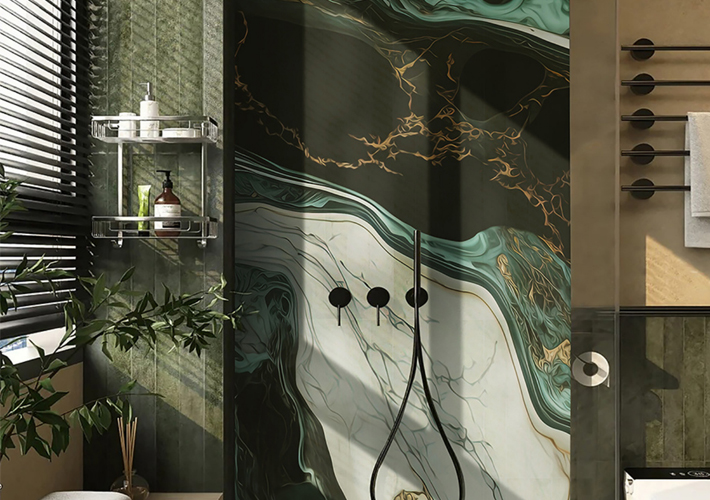
3. Heat Sensitivity
Although UV marble sheets are somewhat heat-resistant, they are not immune to the damaging effects of high temperatures. Direct exposure to hot cookware, open flames, or extreme heat sources can cause the surface to warp or discolor.
Key Details:
- Heat Damage Risk: UV marble sheets can withstand moderate temperatures, but they are not suitable for areas where direct heat exposure is frequent, such as around stovetops or ovens.
- Surface Discoloration: Heat can cause the UV coating to discolor or bubble, which can ruin the appearance of the material.
4. Shorter Lifespan Than Natural Marble
While UV marble sheets are durable, they do not have the same longevity as natural marble. Over time, the UV resin can wear down, and the material may need to be replaced. Natural marble, in contrast, can last a lifetime with proper care and can even be re-polished to restore its appearance.
Key Details:
- UV Resin Degradation: Over years of use, the UV resin may start to degrade, especially in environments with high wear or exposure to UV rays.
- Replacement Costs: While the initial cost is lower, the lifespan of UV marble sheets is still finite. Depending on usage, they may require replacement every 10-15 years, compared to the centuries-long lifespan of real marble.
5. Environmental Impact of PVC Production
While the manufacturing process of UV marble sheets is more sustainable than natural marble quarrying, PVC production still has environmental costs. PVC is a plastic material, and its production involves the use of fossil fuels, contributing to carbon emissions and environmental pollution.
Key Details:
- Carbon Footprint of PVC: PVC is derived from petrochemicals, and the manufacturing process can result in harmful emissions. While UV marble sheets are recyclable, the production phase still has an environmental cost.
- Non-Biodegradability: PVC is not biodegradable and can contribute to long-term waste accumulation if not disposed of properly at the end of its lifecycle.
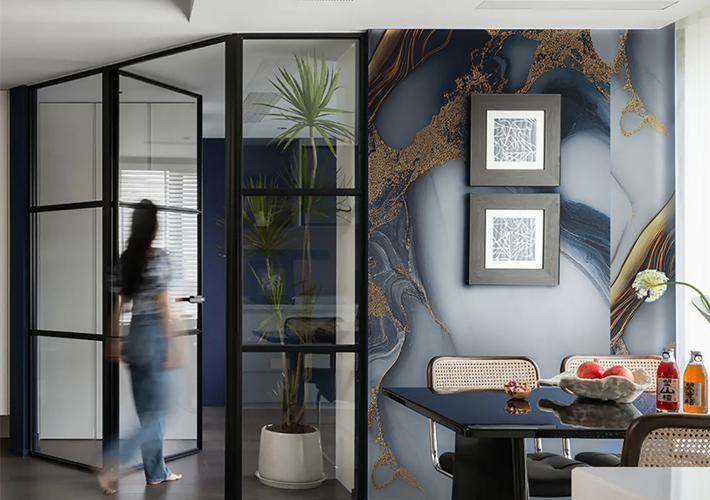
Conclusion
UV marble sheets provide a highly functional, aesthetically pleasing, and cost-effective alternative to natural marble, particularly in commercial or residential spaces where durability, ease of maintenance, and budget constraints are key considerations. However, they are not without their limitations, particularly in terms of authenticity, heat sensitivity, and potential chemical vulnerability.
For those seeking a visually similar material to marble without the high cost and weight, UV marble sheets represent an excellent option. However, for projects requiring long-term, high-end, or unique marble aesthetics, natural stone may remain the better choice despite the higher upfront costs. Understanding both the advantages and disadvantages in detail will allow designers, homeowners, and businesses to make informed

